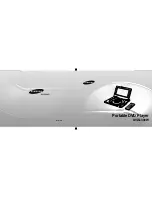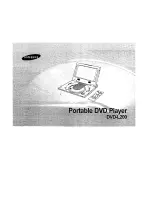
26
M3PO go
How does it all work?
So how do you create an .MP3 file and how do you get it into your player? An important ques-
tion, and we would like to answer it right here. As described above, the .MP3 format differs
greatly from the data you find on an audio CD. .MP3 files are data-reduced, which means that
they are manipulated by computer software. This shrinking process is called encoding. This is
very time-consuming, as the data is being scanned for repeat data, which can be filtered out.
The encoding process itself can be achieved easily given the right software – the only other
thing you'll need is a fast PC or lots of time.
The most common practice these days is the reading of audio files and the subsequent en-
coding in the .MP3 format. During this process the contents of the audio CD are copied to the
hard disk – this is commonly known as “ripping”. Providing you are using a high-quality CD
drive, the copy will be identical to the original – even though minor errors can occur, they are
usually inaudible .
Once the data is on HD, you can start the encoding process. Here you can usually choose the
amount of data compression you want to apply to the data. This compression (next to data
reduction) is measured in kilobits per second (kBit/s), for example 96kBit/s. The smaller the
value, the smaller the size of the .MP3 file. But also the bigger the deterioration in sound
quality. Music in stereo CD quality requires a value of no smaller than 112-128kBit/s. Speech
(mono) is usually being compressed to a value of 32-56kBit/s . The following table will show
you a few applications:
Sound Quality
kBit/s
Reduction
Telephone
8
96:1
Better than short wave radio
16
48:1
Good general quality
32
24:1
Radio quality (stereo)
56...64
26...24:1
Near CD quality (stereo)
96
16:1
CD quality (stereo)
112...160
14...8:1
The m3po processes bit rates of up to 320 kBit per second.
The coded data can be burned to CD and played back by your M3Po go. As simple as that.
Содержание M3PO GO
Страница 1: ...1 12 04 01 Manual English ...



































